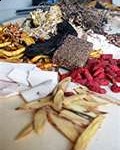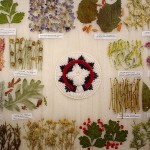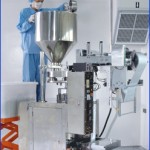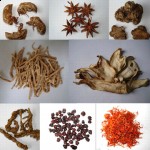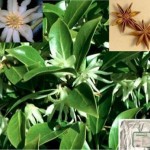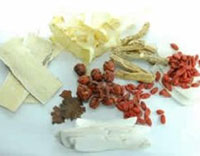An old Chinese Proverb says, He that takes medicine and neglects diet wastes the skill of the physician.
The Chinese have used food and Chinese herbs, basically the human diet, to treat seemingly incurable diseases as far back as records can show. We now have studies that prove that foods and Chinese herbs are effective in treating nearly every affliction known to man. It is a Western concept that the word “diet” refers almost exclusively to a weight loss system. A Chinese diet may or may not focus on weight loss, but it’s primary intention is to treat an ailment. A Westerners “diet” focuses on protein, calories, carbohydrates, vitamins and other nutrients, whereas a Chinese diet focuses on the: Five Flavors, Five Energies, Movements of Foods and Organic Actions of Foods. Maybe this sounds like a foreign language, but the basic concept is pretty easy, if I feel cold, I should eat something warm. If I feel hot, I should eat something cold. (don’t we all do this?)
This is of course a simplification and I know you want more details. It can get a little more technical, so stay with me.
I covered the Five Flavors and Five Energies is a part one of this article. Connect here to read that article.
Here I will delve into the “Movement of Foods” and “Organic Actions of Foods”.
The movements of foods has nothing to do with a musical score. Foods have a tendency to move inward, outward, up or down within us. To move inwards means to move from outside towards the inside. Foods that do this often alleviate constipation. Foods that provide movement from inside towards outside reduce fever and induce sweating. Downward moving foods can relieve vomiting and asthma. Upward moving foods help symptoms of diarrhea, and prolapsed of organs. This is only a general overview, but even a little knowledge can be of great benefit. The movement of foods also corresponds to the seasons.
Here is a brief overview of which foods are best in which seasons. Springtime is all about growth and upward movement so eat foods that also promote an upward movement such as celery, kidney beans and shiitake mushrooms. Foods that move outward are best in the summer these foods have a hot energy and are usually pungent like green pepper, red pepper, black peppers and soybean oil. In the autumn foods with a downward movement are preferred. The downward movement corresponds to the leaves falling. Food such as bananas, barley and bean curd are best in the autumn. Lastly, in the winter eat foods that move inward, just as we move indoors in the winter. Inward moving foods include bitter gourd, clams and seaweed.
Lastly, a brief introduction about the Organic Actions of Foods, it’s not a Greenpeace protest. It simply refers to the specific organ on which a particular food will act. In the West we may think all food goes to the stomach, the intestines and through the digestive organs. But there is more to the saying “the way to a man’s heart is through his stomach”. Different foods really do effect different organ systems in Chinese medicine and diet theory. This can get complicated, many foods have more than one energy and act on more than one organ. Carrots act on the lungs, wheat on the heart, spleen and kidneys, almonds act on the lungs.
Organic actions of foods have been discovered throughout history through both inductive and deductive methods. Traditional Chinese medicine has always put great emphasis on the association of foods and our internal organs. A simple example is chicken liver, it’s helpful for blurry vision, and Chinese Medicine believes our livers are connected to our eyes.
I have simplified how a balanced diet in Chinese theory focuses on the Five Flavors, Five Energies, Movements and Organic Actions of foods. Yet, I hope you understand that from a Chinese viewpoint the word “diet” has almost nothing to do with weight loss and everything to do with how foods effect our body. An organic balanced diet is one that is not necessarily rich in organic foods, but one that balances the internal organs. An individual’s balanced diet is always a mixture of foods with different flavors and energies suited to the needs of that individuals constitution. I hope this is not such a foreign concept now even though it may be a completely new view of diet and nutrition for you. Sun Shu Mao wrote about it approximately 1400 years ago and seeing that history always repeats itself, it’s time to reiterate it today. If you want to learn more check out: Healing with Whole Foods by Paul Pitchford and my other blogs on Chinese Medicine and foods.


 I’ve always enjoyed my vacation time in Minnesota. I happened to be in Minneapolis for it’s Bi- centennial celebration a few years back. They had more than an hour of the most amazing fireworks I’ve ever seen. If you’ve never been there it’s truly the heart-land of America. Real people, real friendly. I had to blog on this news that Minnesota, not on a coast and not really considered the health crazed capital of the country is leading the way with equal access laws regarding alternative medicine practitioners. This new law takes affect and applies to insurance coverage issued, renewed or continued on or after Aug.1, 2009 Very exciting, the next step is on the national level with Medicare.
I’ve always enjoyed my vacation time in Minnesota. I happened to be in Minneapolis for it’s Bi- centennial celebration a few years back. They had more than an hour of the most amazing fireworks I’ve ever seen. If you’ve never been there it’s truly the heart-land of America. Real people, real friendly. I had to blog on this news that Minnesota, not on a coast and not really considered the health crazed capital of the country is leading the way with equal access laws regarding alternative medicine practitioners. This new law takes affect and applies to insurance coverage issued, renewed or continued on or after Aug.1, 2009 Very exciting, the next step is on the national level with Medicare.
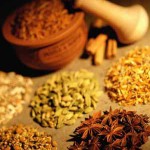
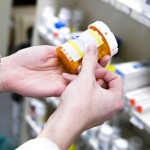
![ginger[1] ginger[1]](http://www.pacherbs.com/wp-content/uploads/2009/08/ginger12-150x150.jpg)
 Drink Ginger tea”
Drink Ginger tea”